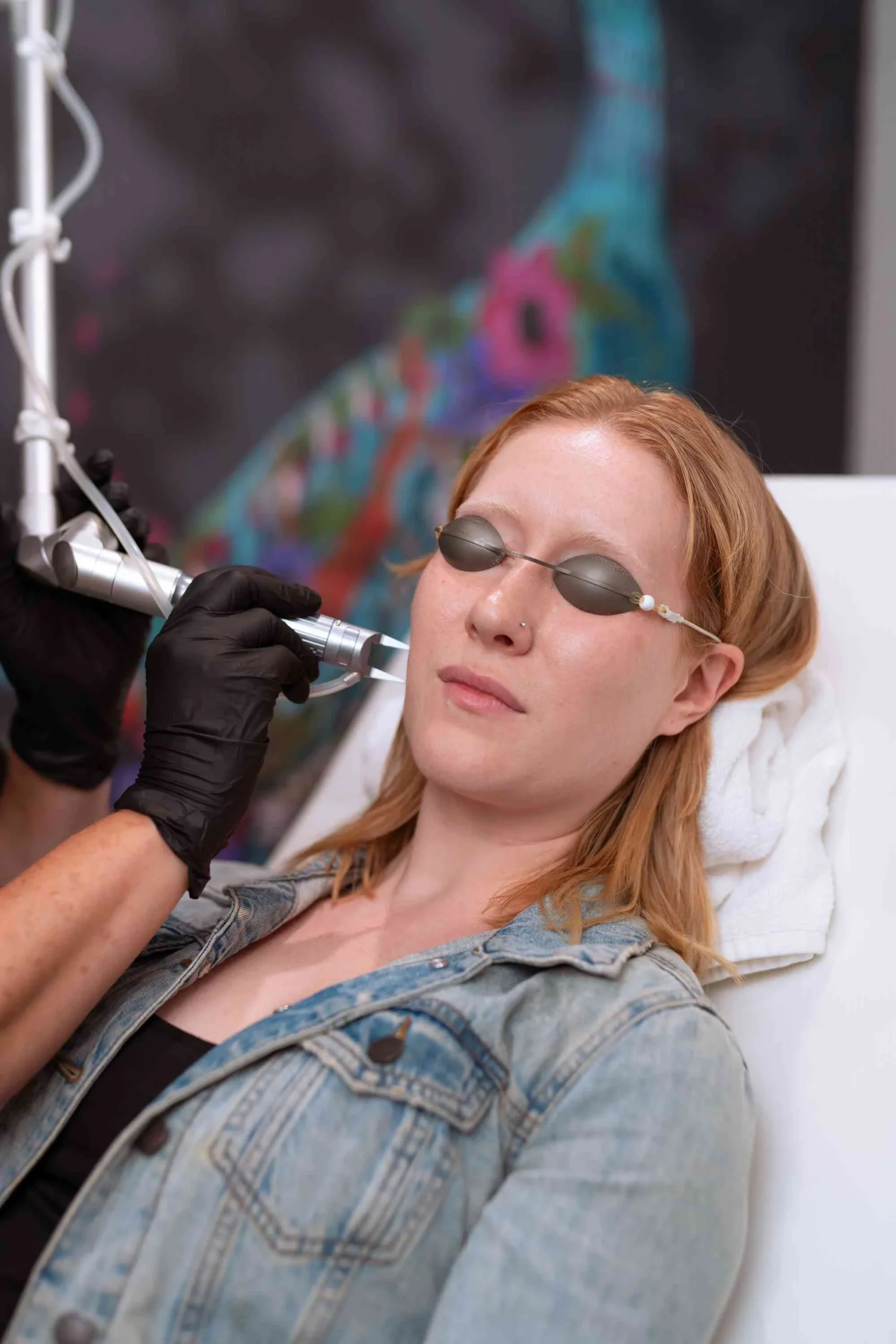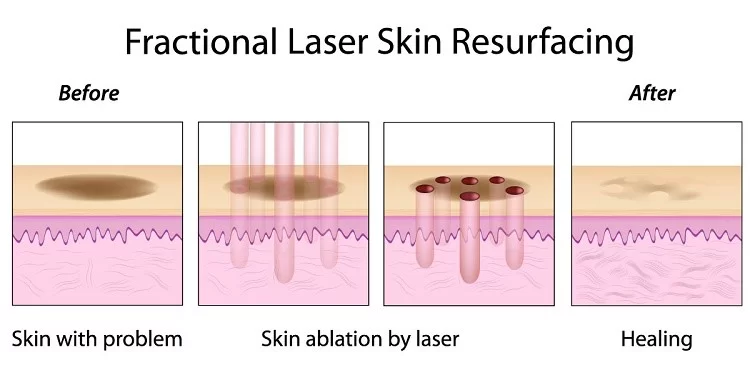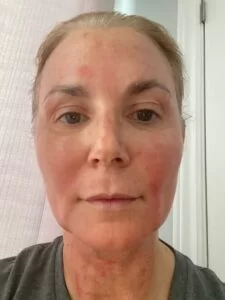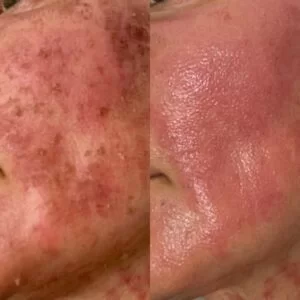
CO2 resurfacing is a highly effective laser treatment designed to address skin concerns such as fine lines, wrinkles, scars, textural irregularities, and more. This treatment utilizes ablative laser technology to promote collagen production and rejuvenate the skin, significantly improving skin tone, texture, and firmness.
CO2 resurfacing involves using a fractional CO2 laser, which precisely removes layers of skin tissue. By creating controlled damage to the outer skin layers, the body’s natural healing processes are activated, stimulating collagen production and revealing healthier, more youthful skin.
CO2 resurfacing is an intensive procedure with a short-term recovery period. Here’s what to expect:
A topical anesthetic cream is applied prior to treatment to minimize discomfort. Additional pain management options may be provided during the procedure for enhanced comfort.
The laser targets specific areas of the skin, creating micro-injuries to stimulate collagen while removing damaged tissue.
The procedure typically takes 30 minutes to 1 hour depending on the treatment area.
CO2 resurfacing requires dedicated aftercare to ensure optimal healing and results.
Most patients notice a significant skin tone and texture improvement within a few weeks. Collagen production continues for months post-treatment, further enhancing results. Depending on your skin concerns, one to three sessions may be recommended.
CO₂ resurfacing can be effectively combined with other treatments at Thrive! MedAesthetics & Wellness to enhance overall results. For instance, pairing this procedure with a customized secretome can further boost collagen production and accelerate healing, offering comprehensive skin rejuvenation.
CO2 resurfacing treatments are highly effective for skin rejuvenation, but adding secretome therapy creates a synergistic effect, significantly boosting their results. CO2 resurfacing stimulates collagen production and improves skin texture, while the secretome, derived from your own stem cells often extracted from hair follicles, amplifies the regenerative signals, providing a concentrated boost of the specific molecules needed for skin revitalization. This combined approach leads to enhanced collagen remodeling, accelerated healing, and a more youthful complexion.
Results from RF resurfacing typically become noticeable within a few weeks as collagen remodeling occurs. Full results may take up to three months, with skin appearing smoother, tighter, and more radiant. Depending on the individual’s goals, 2-4 sessions may be recommended for optimal outcomes.








We invite you to visit us at our convenient location in Aurora, ON, just off Yonge Street at Kennedy. Alternatively, feel free to reach out to us directly at 289-338-5916.
With CO2 resurfacing, you can treat fine lines, wrinkles, scars, and texture irregularities. It uses a fractional CO2 laser to remove layers of skin tissue, stimulating collagen production and revealing healthier, firmer skin.
The treatment is preceded by the application of a topical anesthetic cream to minimize discomfort. During the procedure, additional pain management options may also be offered to ensure your comfort throughout.
The procedure typically takes between 30 minutes to an hour, depending on the treatment area. The length may vary based on your individual skin needs.
CO2 resurfacing is an intensive procedure; you can expect some redness, swelling, and peeling for about 5-7 days. Full recovery usually takes 1-2 weeks, with noticeable skin texture, tone, and firmness improvements.
CO2 resurfacing can be enhanced with treatments like secretome therapy, which amplifies collagen production and accelerates healing. Combining these treatments offers even more significant skin rejuvenation results.
Ideal candidates are individuals with concerns like fine lines, wrinkles, scars, and pigmentation irregularities. It's best for those in good overall health with realistic expectations for treatment results. A consultation will help determine if it's the right option for your skin.